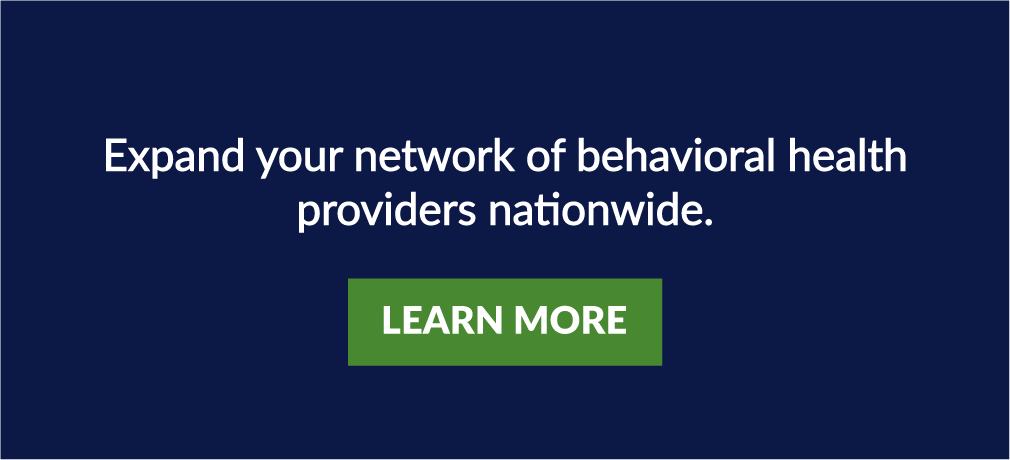Telemental Health to Address Mental Health Access

Trends & Predictions from the South Carolina Telehealth Summit
This article includes thoughts from the Annual Telehealth Summit of South Carolina hosted by Palmetto Care Connections.
One in five Americans (about 53 million people) has mental health concerns, according to the National Institutes of Mental Health. During the COVID pandemic, healthcare staff burnout and general isolation worsened the problem. There is no doubt; we are dealing with a mental health crisis.
One glimmer of hope coming out of the pandemic is the expanded acceptance and usage of telehealth. Providers and payers alike at the Annual Telehealth Summit of South Carolina agree that nowhere is telehealth more impactful than in the practice of behavioral health. Telehealth continues to be an efficient and effective way to expand access to mental health care.
As Meera Narasimhan, senior medical director for behavioral care services at Prisma Health–Midlands said at the Summit, “There is no health without mental health.”
4 Ways Telehealth Helps with Behavioral Health
1. Greater network access
With telemental health, it doesn’t matter if a doctor moves out of state, doesn’t live in the patient’s state at all, as long as the provider is licensed there. As the Honorable G. Murrell Smith Jr. stated, “Healthcare access should not be limited to the zip code you live in.”
In South Carolina, where there are just 600 psychiatrists for 5 million lives, “You’ll never be able to meet the need [with in-person care],” Dr. Narasimham explained. By providing access to a broader network of psychiatrists, psychologists, mental health counselors and social workers, telehealth bridges the lack of access that exists in mental healthcare.
2. Better Emergency Department (ED) Efficiency
President and CEO of the South Carolina Hospital Association Thorton Kirby said it well; “Our nation takes a lot of its problems to the ED.” Behavioral health also accounts for the top three diagnoses in emergency departments.
When members visit the ED for mental health concerns, they can be placed on a “hold” in the hospital until ED providers feel it’s safe to release them. The hospital is often the wrong environment for the patient (creating a quality-of-care issue) and it’s not an effective use of ED space (creating an operations problem).
By introducing telemental consults for mental health ED visits, one hospital in South Carolina reduced ED holds by 41%. This allowed patients to return to the community more quickly, shifting the focus to recovery.
3. Shorter Length of Stay and Lower Cost
When hospitals avoid holding patients in the ED while waiting for an in-person mental health visit, both the length and cost of the hospital stay decreases. This has quality and financial benefits for patients, hospitals, and insurers. In one case, Dr. Narasimham explained, using virtual mental health consults resulted in a $2,000 reduction in ED costs related to behavioral health. That’s because telemental health expands the pool of providers for patients to see, as well as the number of follow up appointments available.
4. Health Equity Improvement
For those who lack transportation or time off work, are isolated at home, or face other social determinates of health (SDoH) concerns, telehealth is a way to level the healthcare playing field and make care more accessible to everyone. Whether it’s a virtual visit between a patient and a provider, or an eConsult that makes a patient appointment avoidable altogether, telehealth is an innovation that enables mental health equity.
Predicting the Future of Telemental Health
As we attempt to put the pandemic behind us, where does that leave healthcare? How will telehealth play a part in the future of mental healthcare?
1. Telehealth is Here to Stay
Ever since members got a taste of telehealth during the pandemic, they’re hooked. Demand for behavioral telehealth especially is not going away, and health plans will need to remain flexible about covering it. Telehealth is no longer a luxury; it’s expected. In fact, it is now a prerequisite for member satisfaction.
2. Greater Resource Sharing
Collaboration is critical to maximizing future improvements across healthcare. Instead of a community hospital hiring its own psychologist (from a miniscule pool of qualified professionals), that hospital could leverage a state pool of virtual providers who serve multiple hospitals. This allows patients access to the best providers in the state, if not the country.
3. Heavier use of Telemental Health in Schools
School-based telehealth has already made strides in improving access to care for children who might otherwise not see the doctor and keeping children out of the ED. With behavioral health among the hardest to schedule specialist appointments, it makes sense that school-based telemental health is a logical next step.
4. Thinking Broadly About Telehealth
Just as we adjusted our thinking about telemedicine to the broader term telehealth, we will have to broaden our understanding of telehealth as more than just virtual visits. The telehealth toolbox includes all innovations that enable healthcare to happen remotely. That includes modalities such as virtual consultations between providers. eConsults can bridge the gap while a patient waits for that important telehealth visit and allows for the provider to manage the patient in house.
Palmetto Care Connections CEO Kathy Schwarting summed up telehealth’s next directive: “Try something,” she said. “Don’t just think about it; do it.”
Telemental health has an enormous opportunity to improve access and equity—and to do so on a broad scale because its very essence breaks through geographic walls. But to do so, providers and payers alike must be bold—bold enough to engage in pilots. To bring on new partners. To act with inclusivity in mind. That is how we reach telehealth’s potential to solve the mental health crisis.
Written by Meg Wright
Meg specializes in the implementation of eConsult programs, teaching platform users and executing the programs flawlessly. As a client operations manager at ReferWell, Meg brings a decade of experience to ReferWell’s Care Navigation team that is diligently working on assisting in care gap closure programs. On top of her vast eConsult knowledge, Meg is known for the optimism she contributes to her clients and her team.

 © COPYRIGHT REFERWELL
© COPYRIGHT REFERWELL 